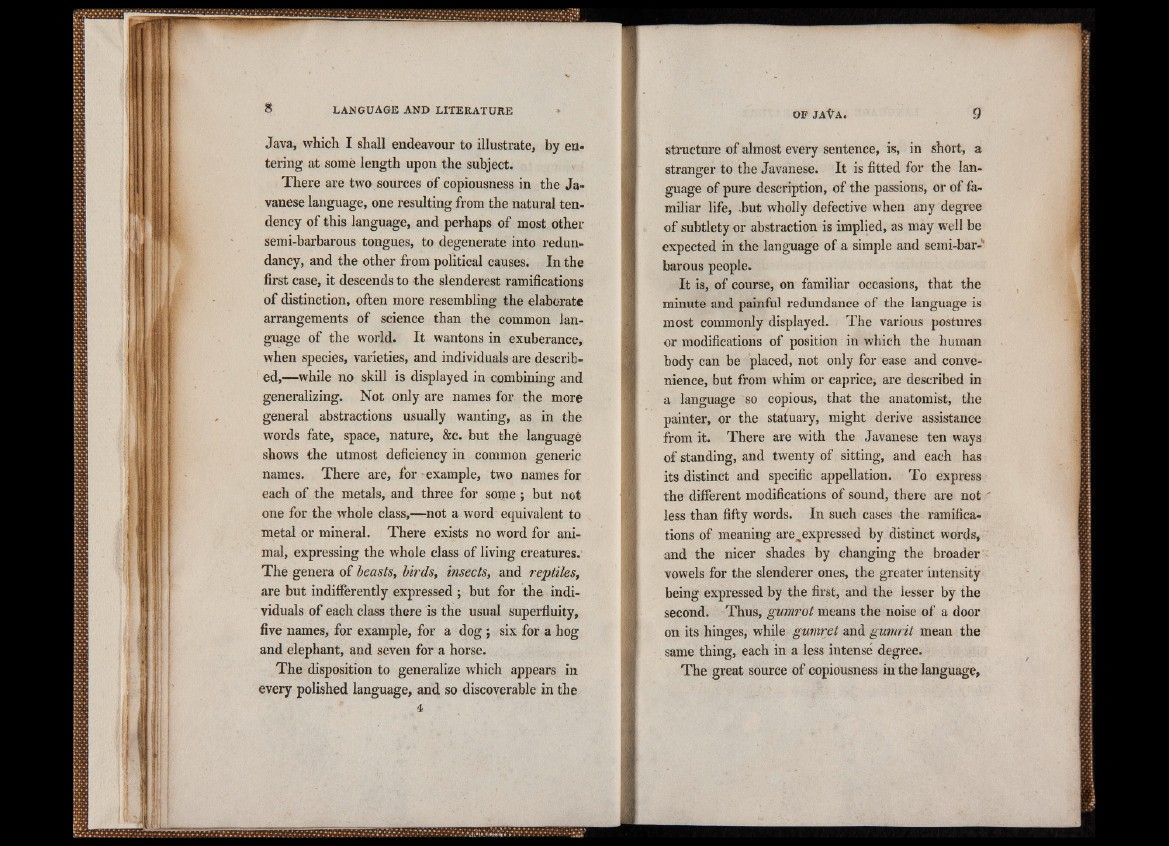
Java, which I shall endeavour to illustrate, by entering
at some length upon the subject. «
There are two sources of copiousness in the Javanese
language, one resulting from the natural tendency
of this language, and perhaps of most other
semi-barbarous tongues, to degenerate into redundancy,
and the other from political causes. In the
first case, it descends to the slenderest ramifications
of distinction, often more resembling the elaborate
arrangements of science than the common language
of the world. It wantons in exuberance,
when species, varieties, and individuals are described,—
while no skill is displayed in combining and
generalizing. Not only are names for the more
general abstractions usually wanting, as in the
words fate, space, nature, &c. but the language
shows the utmost deficiency in common generic
names. There are, for example, two names for
each of the metals, and three for some; but not
one for the whole class,—not a word equivalent to
metal or mineral. There exists no word for animal,
expressing the whole class of living creatures.
The genera of beasts, birds, insects, and reptiles,
are but indifferently expressed ; but for the individuals
of each class there is the usual superfluity,
five names, for example, for a dog ; six for a hog
and elephant, and seven for a horse.
The disposition to generalize which appears in
every polished language, and so discoverable in the
structure of almost every sentence, is, in short, a
stranger to the Javanese. It is fitted for the language
of pure description, of the passions, or of familiar
life, but wholly defective when any degree
of subtlety or abstraction is implied, as may well be
expected in the language of a simple and semi-barbarous
people.
It is, of course, on familiar occasions, that the
minute and painful redundance of the language is
most commonly displayed. The various postures
or modifications of position in which the human
body can be placed, not only for ease and convenience,
but from whim or caprice, are described in
a language so copious, that the anatomist, the
painter, or the statuary, might derive assistance
from it. There are with the Javanese ten ways
of standing, and twenty of sitting, and each has
its distinct and specific appellation. To express
the different modifications of sound, there are not
less than fifty words. In such cases the ramifications
of meaning are^expressed by distinct words,
and the nicer shades by changing the broader
vowels for the slenderer ones, the greater intensity
being expressed by the first, and the lesser by the
second. Thus, gumrot means the noise of a door
on its hinges, while gumret and gumrit mean the
same thing, each in a less intense degree.
The great source of copiousness in the language,